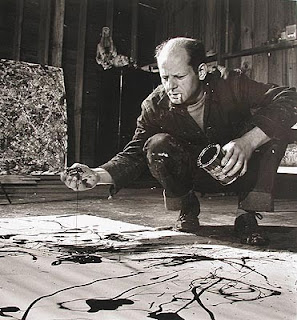NYC – Moma: Jackson Pollock’s One : Number 31, 1950.
Oil and enamel on unprimed canvas. (above)
Rhythm is a term commonly associated with music, however visual rhythm is a quality that can also be used when talking about design. Rhythm is the movement is the movement of the viewer’s eye in conjunction with repetition. Much like some of masters of the musical world, Jackson numbered and lettered his paintings, allowing the viewer to look at the piece to receive what it has to offer instead of looking for a preconceived idea of what is there. In the Jackson Pollock painting above, One: Number 3, the viewer has an understanding of the rhythm through the repetition of the strokes of color, which are running across the canvas in a chaotic pattern. The varied shape and thickness of the lines and the randomness of the how the paint was put on the canvas allows us to visualize a beat or a constant feeling of movement as our eyes dance across the painting. The unpredictability and variation of the strokes adds to the dynamism and unsettling rhythms that could be compared to a musical genre. The contrast between the light and dark or loud and soft colors give depth to the piece and enhance the sense of pulsation. We also see the same elements reappear, creating alternating rhythms. Making our eyes bounce or travel back and forth between the vibrating colors and alternating direction of diagonal, vertical, horizontal, etc. lines. This element in the painting is similar to the musical term “spiccato” meaning “bouncing bow.”
Texture refers to the feeling of touch that it can evoke in a viewer. In this painting there is a three dimensionality of the texture, creating a visual pattern as well as rhythm through the shadows and depth conveyed. The texture invites the viewer to explore the piece much more closely, and here in Pollock’s painting we can see and imagine the tactile texture – again adding to the piece by creating a rhythmic gesture. We can say that Jackson’s paintings are not just pictures, but a representation of movement in time through rhythm and texture.


No comments:
Post a Comment